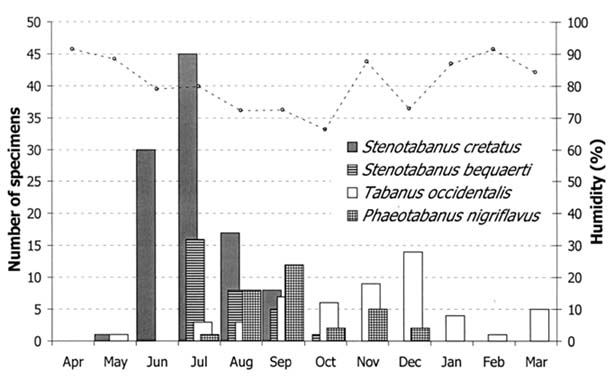Tabanid females are better known as hematophagous on man and other mammals, and linked to mechanical transmission of parasites. The association between tabanids and reptiles is poorly known, but has been gaining more corroboration through experiments and occasional observation in the tropics. The present study was conducted at a military base (CIGS/BI-2), situated 54 km from Manaus, Amazonas, in a small stream in a clearing (02°45'33"S; 59°51'03"W). Observations were made monthly, from April 1997 to March 1998, during two consecutive days. At the same time, other vertebrate animals were offered, including humans. However in this paper only data obtained on a common caiman, Caiman crocodilus (Linn.), and an anaconda, Eunectes murinus (Linn.), in diurnal observations from 05:30 a.m. to 18:30 p.m., will be discussed. A total of 254 tabanid specimens were collected, 40 from the anaconda and 214 from the caiman. Four tabanid species were recorded on these two reptiles: Stenotabanus cretatus Fairchild, S. bequaerti Rafael et al., Phaeotabanus nigriflavus (Kröber) and Tabanus occidentalis Linn. Diurnal activities showed species-specific patterns. The first three species occurred only in the dry season. T. occidentalis occurred during the whole observation period, and with increased frequency at the end of the dry season. We observed preferences for body area and related behavior of the host. Observations on the attack of tabanids on one dead caiman are also presented.
Tabanidae; horse fly; hematophagy; common caiman; anaconda; tropical forest; Amazon Basin




